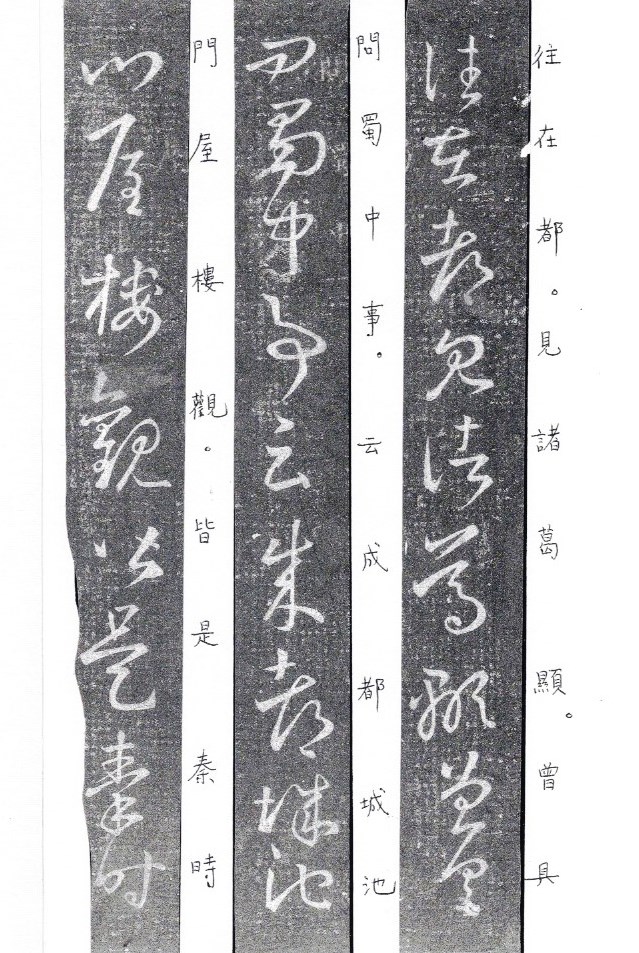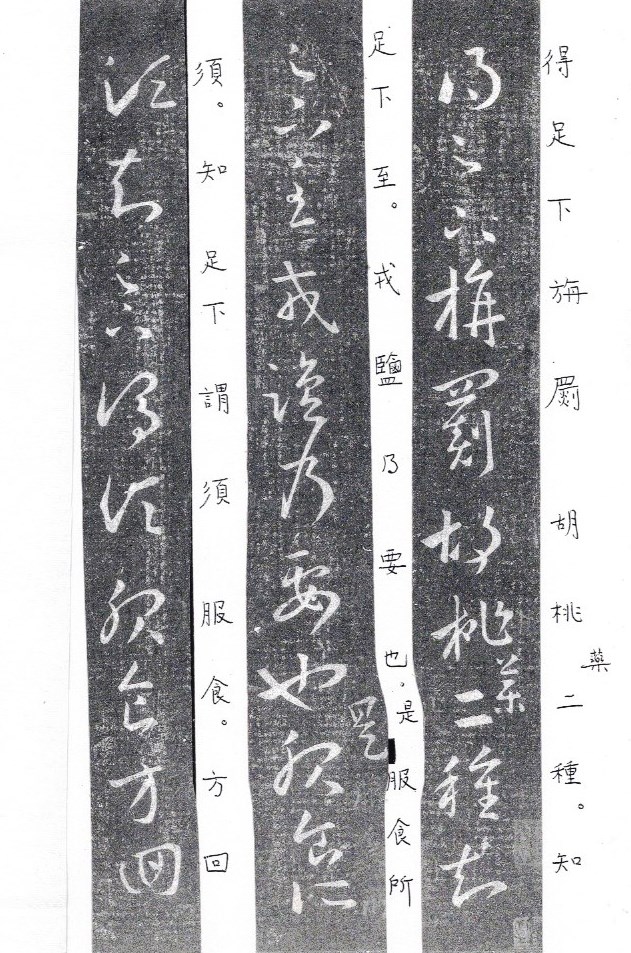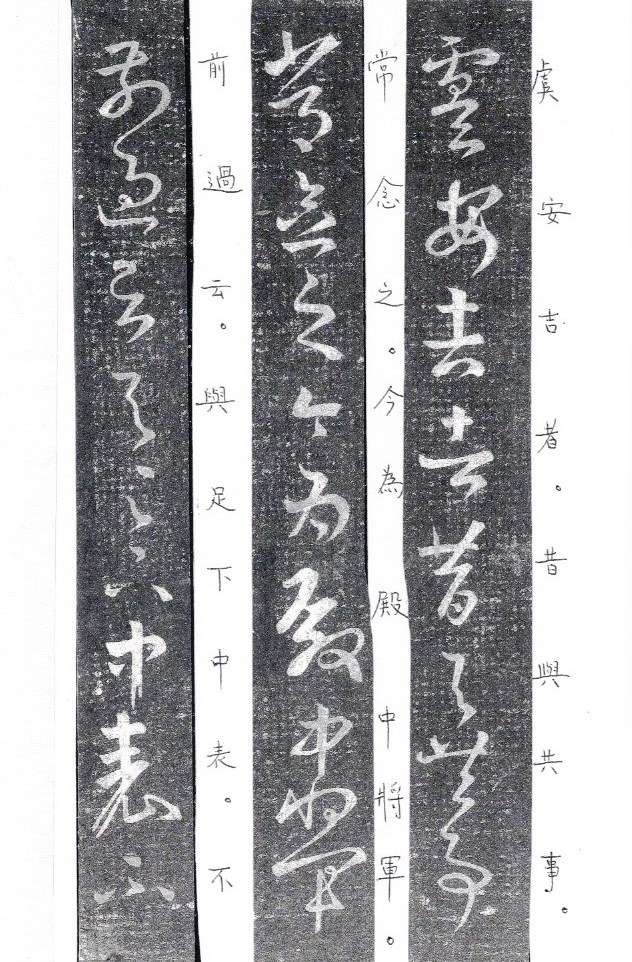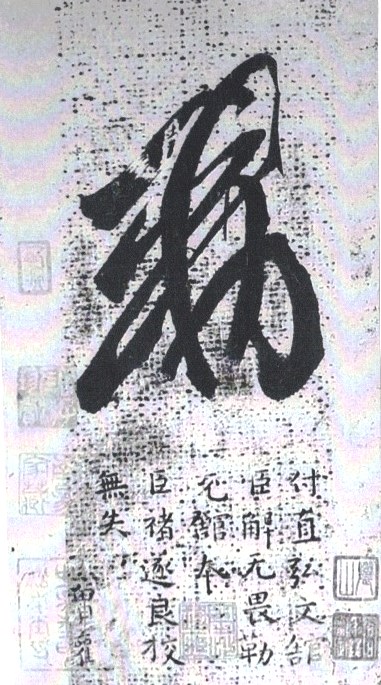Letters 1 to 10 can be found in the following webpage.
Cursive script: Shi Qi Tie (The Seventeenth) of Wang Xizhi 王羲之十七帖 (Part 1)
Letter 11 to 20 can be found in the following webpage.
Cursive script: Shiqi Tie (The Seventeenth) of Wang Xizhi 王羲之十七帖 (Part 2)
21 Han Shi Tie (漢時帖)


知有漢時講堂在,是漢何帝時立此。知畫三皇五帝以來備有,畫又精妙,甚可觀也。彼有能畫者不(否)?欲因摹取,當可得不(否)?信具告。
I heard that your place (Zhou Fu ‘s 周撫 in Shu 蜀) still have a Han Dynasty lecture hall (講堂). I wonder which Han Dynasty emperor built it. I even know that there are paintings on the walls depicting the Three Sovereigns and Five Emperors (三皇五帝). The paintings themselves are quite exquisite and impressive. Do you have anyone there who can draw? I want to ask him to copy them down. I wonder if this is possible, please reply.
22 Zhi Cong Tie (諸從帖)

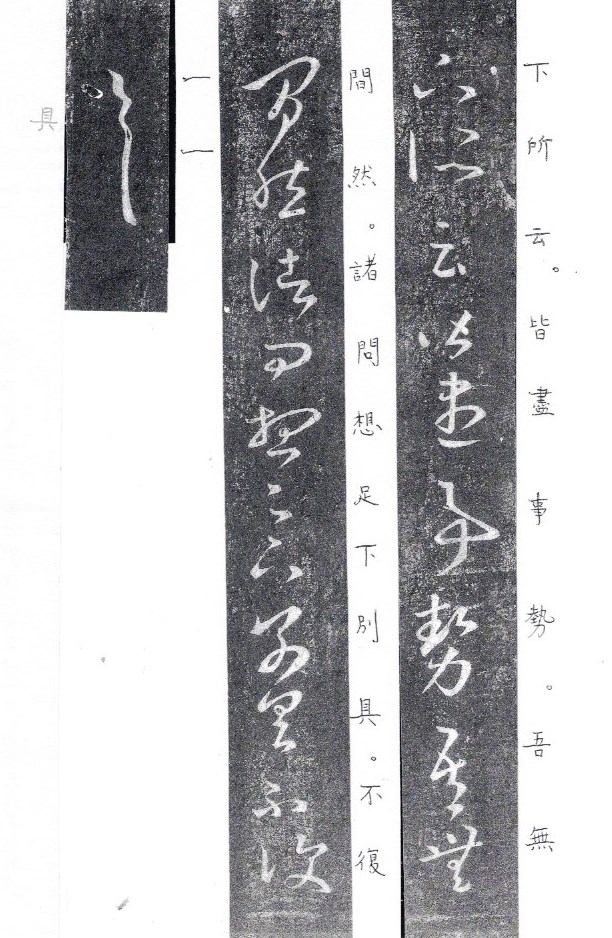
諸從並數有問,粗平安。唯脩載在遠,音問不數,懸情。司州疾篤,不果西,公私可恨。足下所云皆盡事勢,吾無間然。諸問想足下別具,不復具。
Those among our Wang clan often correspond with me, and they are more or less fine. Only Xiu Zai (修載)(Wang Qizhi 王耆之, courtesy name Xiu Zai 修載) lives far away and we communicate less often and I always think about him.
Sizhow 司州 (Wang Huzhi 王胡之, courtesy name Xiuling 修齡) was severely ill and so he did not travel west to take up his post. (Jin Mu Emperor 晉穆帝 granted him the prefect of Sizhou 司州刺史). This is regrettable news to me personally and as a government official. What you (Zhou Fu 周撫) stated earlier is already a complete picture of the situation and so I do not have anything to add. I believe other members of the Wang family have also written to you so I am not going to repeat.
23 Chengdu Chengchi Tie (成都城池帖)
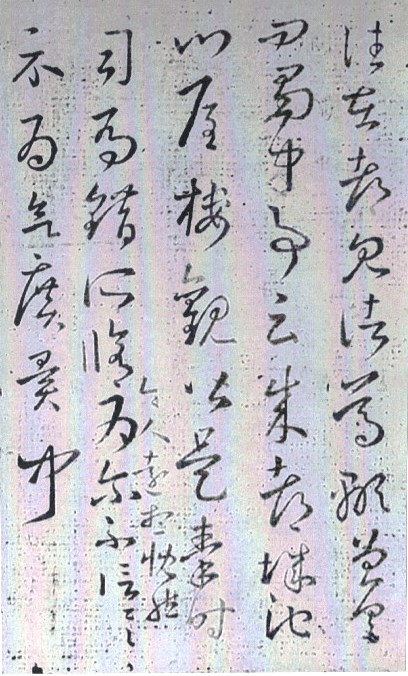

往在都見諸葛顯,曾具問蜀中事,云成都城池門屋樓觀,皆是秦時司馬錯所修,令人遠想慨然。為爾不(否)?信乙乙(具)示。為欲廣異聞。
When I met Zhuge Xian (諸葛顯) in the capital (Jiankang 建康), I asked him about the details of the affairs in Shuzhong (蜀中). He said that the city walls, moats, gate houses and towers in Chengdu (成都) were all built by Sima Cuo (司馬錯) during the Qin (秦) Dynasty. Are all this true? They make us think emotionally about people in the past. Please write to me so that I can increase my knowledge on these exotic (historical) facts.
24 Shan Ju Hu Tao Tie (旃罽帖)


得足下栴罽、胡桃,藥二種、知足下至。戎鹽乃要也,是服食所須,知足下謂須服食。方回近之,未許吾此志。知我者希,此有成言。無緣見卿,以當一笑。
I have received your (Zhou Fu’s 周撫) shan ju (旃罽), hu tao (胡桃 walnuts) and two kinds of medicine. I gratefully acknowledge your great kindness to me. Rong salt (戎鹽) is another thing I require. I need it when I take drug. I know from your letter that you also have been taking drug recently.
Shan ju (旃罽) may be a red woolen or felt fabric.
Rong salt (戎鹽, halite) is a mineral containing sodium chloride crystal. It is the material for Taoist alchemy.
Taking drugs was not illegal in those days as people took drugs for recreation purposes. Some people even thought that taking drugs was good to the body and mind.
Shishuo Xinyu (世說新語) mentions that Wushi powder (五石散) was a common medicine at that time. It was made of white and purple quartz (石英, 石脂, 鐘乳) and other minerals. After taking it, the whole body became hot and felt different.
(Shishuo Xinyu (世說新語) was compiled and edited by Liu Yiqing (劉義慶)(403–444 CE). It is a historical compilation of the stories of scholars, musicians, and artists during the 2nd-4th centuries.)
The phrases 方回近之,未許吾此志。can be interpreted as follows:
i Fang Hui (方回)(Wang’s brother-in-law Xi Yin 帮愔, courtesy name Fang Hui 方回) knows about the drugs and he shares different opinion to me.
ii Fang Hui shared different feelings or hallucinations after taking drug.
iii Fang Hui is against my taking of the drug. (It seems that this interpretation is less likely.)
‘Few are those who know me’ has become a saying (知我者希.則我者貴).
The phrases come from Laozi, Tao Te Ching (老子道德經), Chapter 70.
‘Those who understand me are rare, those who pattern themselves after me are highly prized. ‘(Translated by Jan Julius Duyvendak)
I do not have the chance of seeing you.
The phase 以當一笑 can be interpreted as:
i I write this letter for you to have a bit of fun. This shows the free and easy demeanour of Wei and Jin elite people (魏晋人仕的灑脱風度).
ii To other people’s criticism, I take this as a laugh.
25 Yaocao Tie (藥草帖)
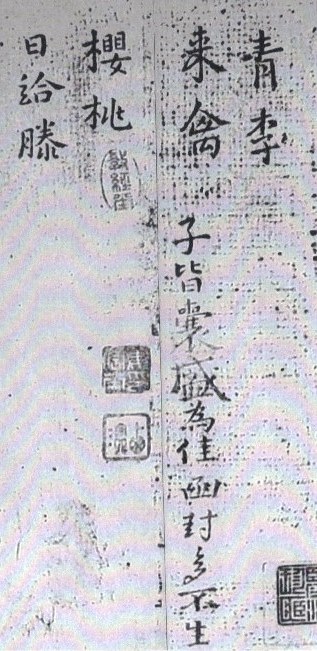

彼所須此藥草,可示,當致。
If you (Zhou Fu 周撫 in Zhu 蜀) need any herbs, let me know. I will try to get them for you.
26 Lai Qin Tie (來禽帖)


青李、來禽、櫻桃、日給滕(藤)子,皆囊盛為佳,函封多不生。
Seeds of green plums (青李), laiqin (來禽 apples),cherries (樱桃) and rigei teng (日給滕, a certain type of vines) are best packaged in cloth bags when they are sent. If they are sent in sealed packets (wooden boxes), they usually will not germinate.
27 Hu Tao Tie (胡桃帖)
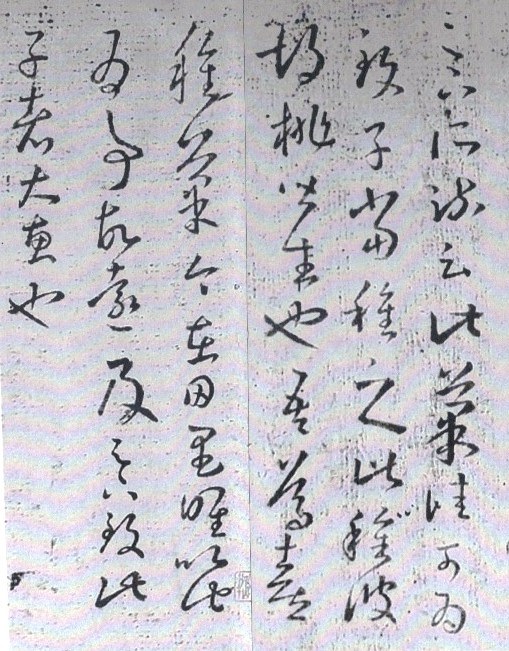
足下所疏云此果佳,可為致子,當種之。此種彼胡桃皆生也。吾篤喜種菓,今在田里,唯以此為事。故遠及。足下致此子者,大惠也。
Your letter mentioned the fruit tree is good. Send me some seeds and I can grow the trees here. I manage to grow the walnut trees from your place (Shu 蜀) here (in Guiji 會稽). I love planting fruit trees very much. Now I spend most of my time in the field (after retiring from my post). This is the only thing I am doing. If you can send me some seeds from your distant place, you are doing me a big favour.
28 Qing Yan Tie (清晏帖)


The text can be interpreted in 3 ways:
知彼清晏歲豐,又所出有無乏,故是名處,且山川形勢乃爾,何可以不遊目? or
知彼清晏歲豐,又所出有無一乏,故是名處,且山川形勢乃爾,何可以不遊目? or
知彼清晏歲豐,又所出有無,鄉(嚮)故是名處,且山川形勢乃爾,何可以不遊目?
(I think the first one or the second one is more convincing.)
I know that you (Zhou Fu) are at a place that is tranquil, peaceful and with good harvest every year. It produces extraordinary crops that cannot be found elsewhere. The place is well known since the past. Its sceneries of mountains and rivers are equally outstanding. Why don’t you go sightseeing?
29 Yu Anji Tie (虞安吉帖)
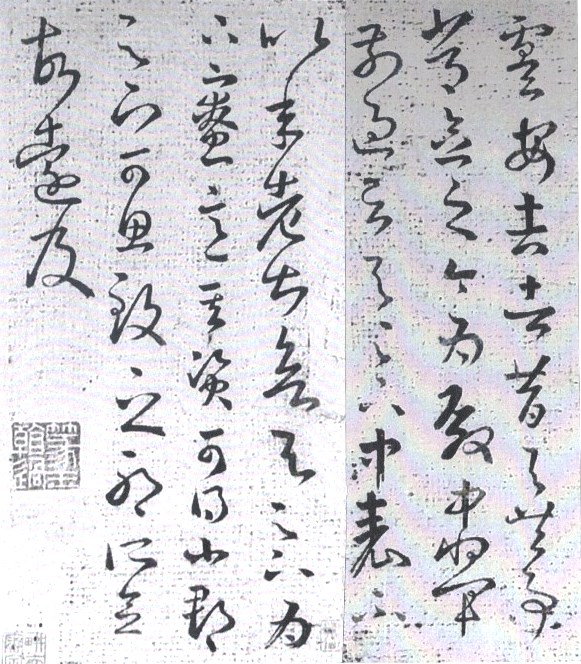

虞安吉者,昔與共事,常念之。今為殿中將軍。前過云,與足下中表。不以年老,甚欲與足下為下寮。意其資可得小郡,足下可思致之耶?所念,故遠及。
Yu Anji (虞安吉) worked with me in the government before and I always think of him. He now holds the post of court general (殿中將軍). When he came to my place last time, he mentioned to me that he was your cousin. Despite he is elderly, he wants to work under you. I trust he is qualified to hold a position in a small county. Would you be interested in hiring him? As I care about him so I write to you from afar.
Colophon 跋尾
敕
付直弘文館臣解无畏敕充館本。臣禇遂良校無失。僧權
Shi Qi Tie contains 29 letters. Most of them were written to Zhou Fu (周撫) in Zhu (蜀). Zhou Fu was one of Wang Xizhi’s best friends. Xizhi lived in the time of political tumult especially during his last few years. He died in 361 CE aged 58. Many of his manuscripts were lost or destroyed in that chaotic and difficult time. Shou Fu lived in Zhu (蜀, present-day Sichuan 四川) and the place was relatively peaceful. This may be one of the reasons that those letters survived. Tang Taizong (唐太宗)(598 – 694) was an passionate collector of Wang Xizhi calligraphy during his reign, and went to extreme lengths to collect all the known extant Wang Xizhi works. Without Tang Taizong’s amazing effort, those letters might not have survived. Despite the original ink writings have long been lost and the Shi Qi Tie handed down now is an engraved version, we can still learn about the cursive writing of Xizhi. It is believed that Shi Qi Tie contains the best calligraphy pieces to start learning cursive writing.
Bibliography
https://zh.wikipedia.org/wiki/%E9%83%97%E6%84%94 郗愔 (313-384), 字方回…)
https://zh.wikipedia.org/wiki/%E9%83%97%E6%9B%87 郗曇 (320-361), 字重熙…)
https://zh.wikipedia.org/zh-sg/%E5%91%A8%E6%92%AB 周撫 (?-365), 字道和…)
https://www.sohu.com/a/443385263_584699 (王羲之《十七帖》全集+释文!
https://baike.baidu.com/item/%E5%8D%81%E4%B8%83%E5%B8%96/9400210 (十七帖)
渡邊隆男 (1988) 東晉王羲之 十七帖二種 二玄社ISBN 4-544-00514-0
祁小春 (2010) 王羲之 十七帖 ·湖北美术出版社 ISBN 978-7-5394-3712-5
龙友 王玉池 (2011) 名碑各帖完全大观•王羲之十七帖 江西美术出版上社 ISBN 978-7-5480-0666-4
俞丰 (2009) 經典碑帖釋文譯注, 上海書畫出版社, ISBN 978-7-80725-846-9
蔣勳 (2010) 手帖 南朝嵗月, INK 印刻文學生活雜誌出版有限公司 ISBN 978-986-6377-94-5
Ouyang Z S, W C Fong, Y F Wang (2008) Chinese Calligraphy, Yale University, ISBN 978-0-300-12107-0


